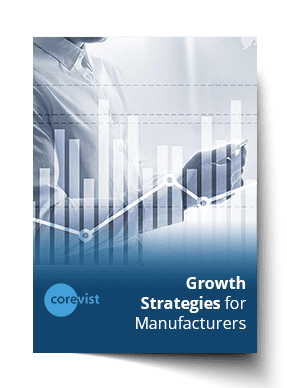Share
Author
George Anderson
Share
Leveraging Your Field Sales Portal for Growth
A Field Sales Portal is a powerful growth tool for manufacturers, particularly in the post-COVID world. It’s more than a CRM, because it allows reps to place orders on behalf of customers with the customer’s personalized business rules enforced from the ERP. (Note: The best solutions also post the order to the ERP in real time, 100% error free, with all the customer’s relevant business rules enforced.)
So how can you leverage your Field Sales Portal for growth?
Check out these 3 strategies:
1. Set up personalized catalogs and picklists for each customer account
Some markets will always prefer working with a sales rep (rather than ordering through a self-service B2B eCommerce portal). A great rep makes your customers feel like they’re in good hands, which builds trust and helps finalize transactions.
Yet good reps have to work hard to know their customers—particularly if you have a large product catalog, and/or if you have ancillary product lists associated with major SKUs. The more products you have which aren’t relevant to a given customer, the more filtering your reps have to do when building orders on behalf of their customers.
Setting up personalized catalogs and picklists by customer account makes life much easier for your reps. When they select a customer account to service, the catalog will show only products from that customer’s picklist. This makes it easy for the rep to talk about relevant products, and it increases the value which the customer gets out of the interaction.
But how do you set up these personalized catalogs/picklists? And—the million-dollar question—how do you manage them? Sounds like a nightmare, right?
A well-designed Field Sales Portal solution should include real-time SAP integration. That way, any picklists defined by customer in SAP automatically take effect in the Sales Portal. A real-time integration means there are no batch updates necessary. When the picklist is edited in SAP, the Sales Portal immediately reflects the new data—no other input necessary. (Note: This is the thinking behind the Corevist Field Sales Portal. It’s always up-to-date with SAP data for personalized catalogs/picklists for each account assigned to your rep in SAP.)
In a nutshell, personalized customer catalogs/picklists empower your reps to grow their AOV (average order value) and increase the value they bring to customers. This is a great way to grow revenue through your Field Sales Portal.
NEW Report:
Growth Strategies for Manufacturers
Every manufacturer needs to grow in the digital age. Here’s the ultimate guide to growth strategies for manufacturers. Read now.
2. Choose a field sales portal architecture that’s flexible enough to support a customer-facing solution, too
Gone are the days when manufacturers could have a field sales portal alone (i.e. no customer-facing digital portal). COVID has driven manufacturers’ buyers to self-service B2B portals. Yet the trend was in motion before the pandemic, too; in fact, research from Avionos in 2018 found that the availability of a customer portal was a critical factor in choosing a supplier for 97% of procurement managers.
For manufacturers with a field sales portal, there may be an opportunity to leverage the architecture for a customer-facing solution—as long as the SAP integration architecture permits it. (Note: Corevist’s Field Sales Portal solution supports this kind of scaling. For more information, watch our webinar with our client Bioventus, who started with a Field Sales Portal, then scaled up to onboard customers to the solution as well.)
One caveat: If your Field Sales Portal is going to support customers, basing it on your CRM may not be the best choice. CRM data was never meant for customer consumption. It’s better to choose a solution for Field Sales that keeps SAP data at the core through real-time integration. This kind of architecture allows you to roll out an SAP customer portal solution, too, without duplicate infrastructure investment.
3. Incentivize your reps to process all orders through the Field Sales Portal
If you’re making the transition from manual order entry (i.e. reps calling Customer Service) to a Field Sales Portal, your reps may need a little inducement to adopt the new order entry method. In our experience, successful sales reps tend to be independent thinkers who want control of their sales process. They may be skeptical of anything that changes that process.
Yet you need them to finalize orders through the portal. This reduces your cost to serve, as your customer service staff can focus on higher-value tasks if they’re no longer taking calls from your reps and posting routine orders to SAP.
Of course, order processing efficiency isn’t the only reason your reps should be using the portal. As they get more familiar with it, the portal will empower your reps with greater customer intelligence. They’ll be able to deliver better service in calls and meetings with customers.
Processing orders through the portal also offers clarity in sales tracking data. If the Field Sales Portal includes Google Analytics (as Corevist Field Sales does), you can aggregate all your product sales data in one place with Google Analytics.
One solution is to give your reps a commission bump for orders processed through the portal. This could be for a trial period (say the first quarter after launching the portal), or a permanent program to incentivize order placement through the portal.
Want more?
Download our new report:
Growth Strategies for Manufacturers
We cover 18 growth strategies for manufacturers in the digital age. Read now.










